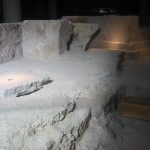THE SYMPHONY ORCHESTRA OF THE UNIÓ MUSICAL, DIRECTED BY PASCUAL CABANES, TOGETHER WITH THE ORFEÓ VALENCIÀ, WILL PERFORM THIS MAGNIFICENT SHOW AT THE CHURCH OF LA ASUNCIÓN

Llíria will welcome 2023 as she knows best, with music. The Creative City of UNESCO, through the Department of Tourism, has combined local heritage and music to receive the new year. “A fusion of experiences for all audiences that takes place within the city’s heritage elements and that gain greater relevance with the interpretation of musical masterpieces like this one by Händel”, explained the Councilor for Tourism of the Llíria City Council, Paco Garcia.
The concert “Händel’s Messiah” will be held this Wednesday, January 4, at 7:30 p.m. in the Church of the Assumption, a 17th-century Baroque-style temple declared BIC. Admission is free until full capacity.
The event organized by Turisme Llíria and the Unió Musical de Llíria, which is also part of the 5th CaixaBank Cycle, will take place under the baton of the young local conductor, Pascual Cabanes, recognized as best conductor in the 2022 CaixaBank Orchestra Competition, and in front of the Unió Musical Symphony Orchestra and the Orfeó Valencià, they will offer a selection of “Händel’s Messiah”.
Likewise, the musical group and the choir will be accompanied by the extraordinary voices of the soprano Belén Roig and the baritone John Heath.
“This performance is part of the cycle of music festivals organized by the Tourism area to publicize local heritage and its musical creative capacity as a city in the UNESCO network, and which this year 2023 will feature two emblematic performances, the one that will star now the Orchestra of the Unió Musical and another in spring with the Primitiva Orchestra of Llíria”, commented the mayor Paco García.








